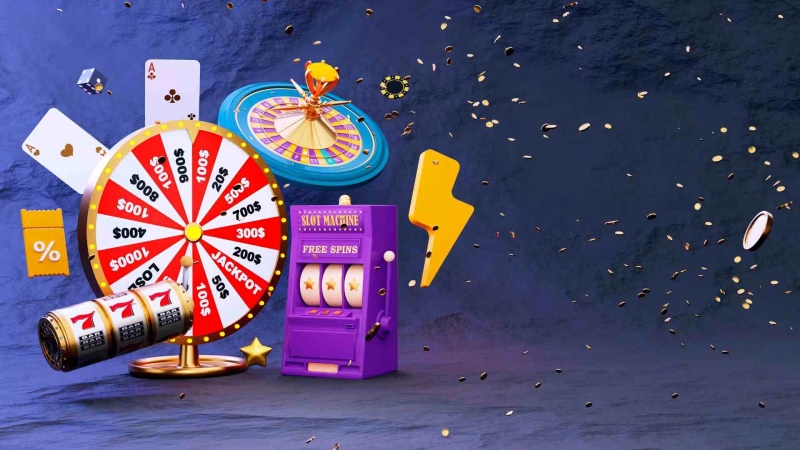Why Casinos Require Source-of-Funds Checks After Large Wins

Winning a large sum in an online casino feels like the ultimate success – until the platform asks for documents. Many players are caught off guard when a simple withdrawal request turns into a request for bank statements, e-wallet screenshots, or transaction history.
At first glance, this can feel like the casino is delaying payment or finding excuses. In reality, source-of-funds checks are a legal requirement tied to financial regulations, not a tactic to hold winnings hostage. Every licensed casino has to follow this process to stay compliant with anti-money-laundering (AML) rules.
Why Big Wins Trigger Documentation Requests
Whenever a withdrawal crosses a certain threshold – often a few thousand euros – Rainbet online casino must confirm that the money being withdrawn came from a legitimate deposit. Regulators require this because gambling platforms can be targets for card fraud, identity theft, and money laundering. If a casino pays withdrawals without verifying the source of funds, it risks losing its licence and facing fines.
Why Casinos Cannot Ignore Large Withdrawals
Casinos are treated like financial institutions. Regulators assume that if a player suddenly requests a large cashout, the operator should know where the original money came from. Without proof, the casino could be paying out stolen funds or illegal income. Verifying deposits protects the casino, protects payment systems, and ensures the player’s win can never be challenged by a bank or law enforcement later.
What Documents Casinos Usually Request
Before looking at the list, it helps to understand the purpose behind it. Casinos are not interested in a player’s full financial life – they only need enough evidence to show that deposited money belongs to the same person making the withdrawal. That means identity, payment ownership, and proof that the budget used for gambling was real and legal.
The most common documents include:
- A recent bank statement showing deposits
- A screenshot of an e-wallet used to deposit
- A photo of a payment card, with digits partially masked
- Income or payslip proof for unusually large balances
- Proof of cryptocurrency ownership for blockchain deposits
Most players only need one or two of these. Once accepted, the approval usually applies to future withdrawals as well.
Why Certain Documents Are Requested
To make the process clearer, here is what each document actually verifies:
| Document Type | What It Proves | Why It Matters | How Casinos Use It |
| Bank statement | Ownership of deposit funds | Prevents stolen card use | Matches deposits to real account |
| Card photo (masked) | Card belongs to player | Avoids identity fraud | Confirms payment source |
| E-wallet screenshot | Account ownership | Stops “borrowed wallets” | Matches usernames and IDs |
| Income proof | Legitimate earnings | AML requirement | Supports unusually large play |
These checks are not optional – they are required by licensing laws in Europe, the UK, Ontario, and most of the U.S.
Why Casinos Rarely Warn About This Ahead of Time
Casinos often avoid advertising verification rules because 90% of players will never trigger them. Small deposits and small withdrawals are processed automatically with no human review. The confusion appears when a player deposits €200, wins €7,000, and suddenly faces verification. To the player, it feels like a delay. To the casino, it is a legal obligation.
What Happens If Documents Are Not Provided
If the casino asks for source-of-funds proof and the player ignores the request, the withdrawal is paused. After a certain time, the casino may reverse the request and return the deposit to the original payment method. Funds are not taken unless the casino can prove fraud, but the account can be permanently closed for non-cooperation. Regulators require this outcome to protect payment networks.
How Players Can Avoid Delays
The best strategy is simple: be prepared. Verification takes minutes when documents are ready and can take days if players scramble for proof. It also helps to use one consistent payment method whenever possible – mixing cards, wallets, and bank accounts triggers extra checks.
To prevent delays:
- Verify ID and address before large withdrawals
- Deposit and withdraw from the same method
- Avoid using someone else’s bank card
- Keep screenshots of transfers or e-wallet receipts
- Respond quickly to document requests
These steps keep most withdrawal reviews under 48 hours.
Why This System Protects Players Too
Some players view verification as a barrier, but it actually protects their win. Once a casino confirms the source of funds, the payout becomes legally secured. A bank cannot reverse it later, and the winnings are tied to verified identity. If a dispute ever happens, the player has documented proof that everything was legitimate.
What Will Change by 2026
Verification systems are becoming faster. KYC and banking APIs allow casinos to confirm identity and payment history instantly in the background. Instead of waiting for emailed PDFs, some casinos now verify deposits in real time. The long-term goal is instant withdrawal for verified users, without repeated document requests.
Outlook
Source-of-funds checks are not a sign that a casino wants to stall or avoid paying. They are part of the same financial rules used in banking, stock trading, and crypto exchanges. The faster players understand the process, the smoother withdrawals become. In the end, the system exists to protect winnings – not threaten them.

